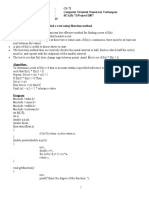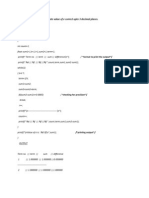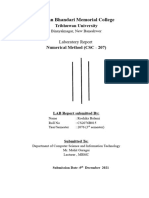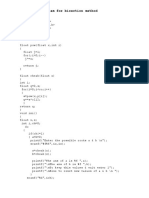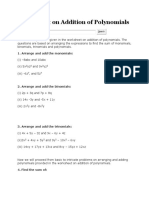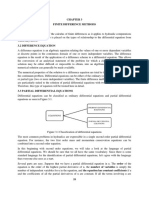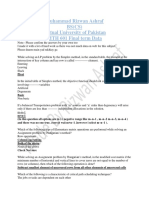0% found this document useful (0 votes)
80 views9 pagesC Prog
The document discusses several numerical methods including bisection, secant, Newton-Raphson, fixed point, Lagrange interpolation, curve fitting, trapezoidal rule, Simpson's 1/3 rule, and Simpson's 3/8 rule. Code examples are provided for each method in C programming language. The document is intended to teach numerical analysis techniques.
Uploaded by
Biplove PokhrelCopyright
© © All Rights Reserved
We take content rights seriously. If you suspect this is your content, claim it here.
Available Formats
Download as PDF, TXT or read online on Scribd
0% found this document useful (0 votes)
80 views9 pagesC Prog
The document discusses several numerical methods including bisection, secant, Newton-Raphson, fixed point, Lagrange interpolation, curve fitting, trapezoidal rule, Simpson's 1/3 rule, and Simpson's 3/8 rule. Code examples are provided for each method in C programming language. The document is intended to teach numerical analysis techniques.
Uploaded by
Biplove PokhrelCopyright
© © All Rights Reserved
We take content rights seriously. If you suspect this is your content, claim it here.
Available Formats
Download as PDF, TXT or read online on Scribd
/ 9











